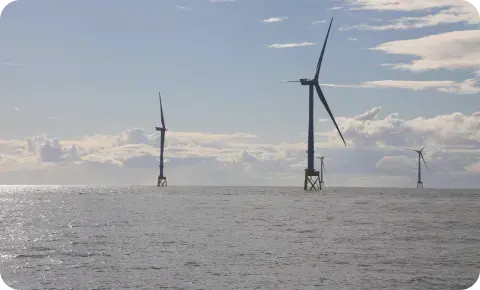
Safety and Environment
A site chosen to minimize the impact on its environment
From the design of the project, all stakeholders integrated safety and environmental preservation considerations into the definition of the floating LNG terminal project in Le Havre.
The project is entirely carried out on the grounds of the port of Le Havre, in an industrial area, largely artificialized, avoiding or minimizing, if necessary, the impact on the environment. The studies carried out for the assessment of safety and security risks confirmed the relevance of the siting selection. These studies form the basis of the technical and administrative requirements governing the construction, operation, maintenance and dismantling of the project, in the best safety conditions and with a minimum impact on its environment.
The FSRU will be permanently moored at Bougainville South Wharf in the industrial port of Le Havre. The land-based facilities will be located within delimited plot of the port. Site selection takes environmental considerations into account.

A reduced footprint of GRTgaz activities
The route of the 3.5 km long pipeline was established based on the conclusions of an environmental analysis, in order to minimize its impact and avoid natural areas at stake. The pipeline will thus be largely laid in areas that are currently waterproofed or along traffic lanes. The pipeline will be buried and the land crossed will be rehabilitated at the end of the work is completed in accordance with the regulations in force.
Integrated LNG risk management
Haropa ensures the safe reception of the FSRU vessel and LNG carriers. In addition to the safety analyses carried out by the FSRU operator, Haropa conducts the preliminary studies under its responsibility, based on its experience in supplying LNG to ships using the port of Le Havre and by adopting the most prudent approaches to the safety of LNG carriers.
Since 2015, the harbour master's office of Le Havre has integrated LNG-related risks into local dangerous goods regulations. Harbour Master's Office incorporates the safety provisions specific to the FSRU and its operation into the port's local dangerous goods regulations.
Safety and security of marine operations: a priority for the port of Le Havre

The reception of ships is provided by a maritime traffic service 7 days a week, 24 hours a day.
All ships calling at Le Havre are attended to as soon as the ships are approaching within 22 nautical miles (40.7 km) of Cap de la Hève. The harbour master's office of Le Havre monitors the anchorage areas of ships up to more than 12 miles from the coast (22.2 km), as well as the regulation and control of maritime traffic in the channels. Liquid bulk vessels, such as LNG carriers, are systematically assisted by the pilots of the port of Le Havre, during berthing or departure by several tugs, depending on their cargo and manoeuvrability.
In extreme weather conditions, LNG tankers are able to set sail quickly. Conditions and alert relays within the port are centralized and planned. Daily checks of the harbour master's office will be carried out on board the FSRU vessel.
In case of necessity or disaster, the port officer on call (24 hours a day) is at the disposal of the commander of rescue operations to coordinate nautical operations. The Departmental Fire and Rescue Service (SDIS 76) implements, if necessary, specific equipment for the fight against accidents in the port environment, in connection with the harbour master's office and towing. It optimizes the action of tugs during firefighting interventions.
Finally, the FSRU vessel is subject to port security regulations. The strict security rules laid down in the Code for sensitive installations are applied, in particular the establishment of a restricted access zone and the mobilisation of the intervention capacity of the integrated port security service of Le Havre.

